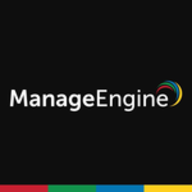

ManageEngine OpManager and Splunk Observability Cloud are prominent in the network and application performance monitoring market. While OpManager offers broad network device and server monitoring, Splunk's advanced alerting and analytics give it an edge in complex environments where performance insights are critical.
Features: ManageEngine OpManager provides comprehensive network device and server monitoring, offering tools for capacity management and supporting up to 5,000 network ports. It includes automation for proactive management and an effective alerting system. Splunk Observability Cloud excels with its robust alerting capabilities, flexible dashboards, and AI-powered analytics. It offers extensive application performance monitoring and seamless integration of cloud and on-premises environments.
Room for Improvement: ManageEngine OpManager users encounter stability issues during upgrades, face cumbersome dashboard customization, and desire better AI integration. Splunk Observability Cloud is criticized for high resource demand, complexity in setup, and limited third-party integration. Its pricing model based on data ingestion is also noted as a drawback.
Ease of Deployment and Customer Service: ManageEngine OpManager is primarily on-premises with moderate technical support and room for improvement in first-line support escalation. Splunk Observability Cloud offers flexible deployment options, including on-premises, hybrid, and cloud, praised for its customer service despite some critiques about support availability.
Pricing and ROI: ManageEngine OpManager is viewed as cost-effective with competitive pricing and high ROI due to low maintenance and scalability. It is more affordable than competitors like SolarWinds. Splunk Observability Cloud is costly, with its pricing tied to data ingestion volumes, but its superior feature set and reliability are acknowledged in complex environments.
However, from a sales perspective, it's very challenging for the initial sale, and even renewals are tough when it comes to the price point.
Using Splunk has saved my organization about 30% of our budget compared to using multiple different monitoring products.
Anyone working in front-end management should recognize the market price to see the true value of end-user monitoring.
I have definitely seen a return on investment with Splunk Observability Cloud, particularly through how fast it has grown and how comfortable other teams are in relying on its outputs for monitoring and observability.
I would recommend a rating of ten out of ten for support.
More support is needed, especially on weekends.
I would give nine points out of ten for ManageEngine OpManager's technical support.
On a scale of 1 to 10, the customer service and technical support deserve a 10.
They have consistently helped us resolve any issues we've encountered.
They often require multiple questions, with five or six emails to get a response.
Scalability is needed more in automation and AI functionalities.
We've used the solution across more than 250 people, including engineers.
As we are a growing company transitioning all our applications to the cloud, and with the increasing number of cloud-native applications, Splunk Observability Cloud will help us achieve digital resiliency and reduce our mean time to resolution.
I would rate its scalability a nine out of ten.
I would rate its stability a nine out of ten.
We rarely have problems accessing the dashboard or the page.
Unlike NetScout or regular agents for APM, RUM has many problems during the POC phase because customer environments vary widely.
If identifying the interface was easier, it would take less time to configure.
There is a call for ManageEngine OpManager to scale better in automation and AI functionality.
Improving the after-sales support and learning materials for local engineers and partners to enhance their capacities and expertise.
The out-of-the-box customizable dashboards in Splunk Observability Cloud are very effective in showcasing IT performance to business leaders.
The next release of Splunk Observability Cloud should include a feature that makes it so that when looking at charts and dashboards, and also looking at one environment regardless of the product feature that you're in, APM, infrastructure, RUM, the environment that is chosen in the first location when you sign into Splunk Observability Cloud needs to stay persistent all the way through.
There is room for improvement in the alerting system, which is complicated and has less documentation available.
Pricing for ManageEngine OpManager is good and negotiable with the distributor;
The cost is quite high-end for ManageEngine OpManager, especially in our very price-sensitive market here in Sri Lanka.
Splunk is a bit expensive since it charges based on the indexing rate of data.
It is expensive, especially when there are other vendors that offer something similar for much cheaper.
It appears to be expensive compared to competitors.
The automated reporting back, which includes identifying the top list and trends, as well as session monitoring from the end user to server through routers and firewalls, provides exact issue notifications for network problems.
The biggest benefit of ManageEngine OpManager for our customers is centrally managing the users and assets of an organization, along with link management, bandwidth management, and similar functionalities.
Managing platforms and network device virtualization on one platform is beneficial.
Splunk provides advanced notifications of roadblocks in the application, which helps us to improve and avoid impacts during high-volume days.
For troubleshooting, we can detect problems in seconds, which is particularly helpful for digital teams.
It offers unified visibility for logs, metrics, and traces.
| Product | Market Share (%) |
|---|---|
| Splunk Observability Cloud | 1.1% |
| ManageEngine OpManager | 1.5% |
| Other | 97.4% |


| Company Size | Count |
|---|---|
| Small Business | 16 |
| Midsize Enterprise | 15 |
| Large Enterprise | 27 |
| Company Size | Count |
|---|---|
| Small Business | 20 |
| Midsize Enterprise | 10 |
| Large Enterprise | 44 |
ManageEngine OpManager is a network, server, and virtualization monitoring software that helps SMEs, large enterprises and service providers manage their data centers and IT infrastructure efficiently and cost effectively. Automated workflows, intelligent alerting engines, configurable discovery rules, and extendable templates enable IT teams to setup a 24x7 monitoring system within hours of installation.
Splunk Observability Cloud offers sophisticated log searching, data integration, and customizable dashboards. With rapid deployment and ease of use, this cloud service enhances monitoring capabilities across IT infrastructures for comprehensive end-to-end visibility.
Focused on enhancing performance management and security, Splunk Observability Cloud supports environments through its data visualization and analysis tools. Users appreciate its robust application performance monitoring and troubleshooting insights. However, improvements in integrations, interface customization, scalability, and automation are needed. Users find value in its capabilities for infrastructure and network monitoring, as well as log analytics, albeit cost considerations and better documentation are desired. Enhancements in real-time monitoring and network protection are also noted as areas for development.
What are the key features?In industries, Splunk Observability Cloud is implemented for security management by analyzing logs from detection systems, offering real-time alerts and troubleshooting for cloud-native applications. It is leveraged for machine data analysis, improving infrastructure visibility and supporting network and application performance management efforts.
We monitor all Network Monitoring Software reviews to prevent fraudulent reviews and keep review quality high. We do not post reviews by company employees or direct competitors. We validate each review for authenticity via cross-reference with LinkedIn, and personal follow-up with the reviewer when necessary.